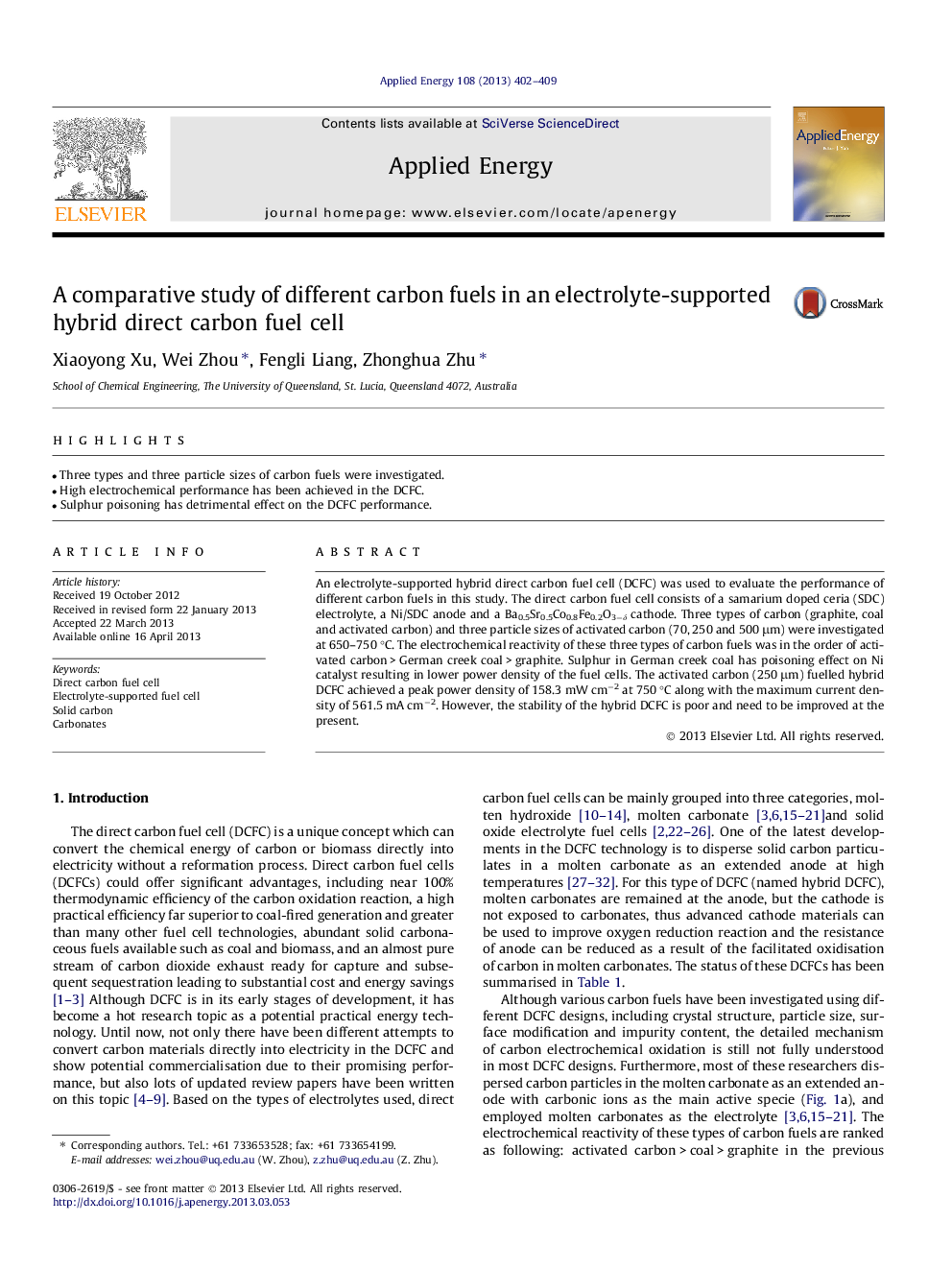| Article ID | Journal | Published Year | Pages | File Type |
|---|---|---|---|---|
| 6692917 | Applied Energy | 2013 | 8 Pages |
Abstract
An electrolyte-supported hybrid direct carbon fuel cell (DCFC) was used to evaluate the performance of different carbon fuels in this study. The direct carbon fuel cell consists of a samarium doped ceria (SDC) electrolyte, a Ni/SDC anode and a Ba0.5Sr0.5Co0.8Fe0.2O3âδ cathode. Three types of carbon (graphite, coal and activated carbon) and three particle sizes of activated carbon (70, 250 and 500 μm) were investigated at 650-750 °C. The electrochemical reactivity of these three types of carbon fuels was in the order of activated carbon > German creek coal > graphite. Sulphur in German creek coal has poisoning effect on Ni catalyst resulting in lower power density of the fuel cells. The activated carbon (250 μm) fuelled hybrid DCFC achieved a peak power density of 158.3 mW cmâ2 at 750 °C along with the maximum current density of 561.5 mA cmâ2. However, the stability of the hybrid DCFC is poor and need to be improved at the present.
Related Topics
Physical Sciences and Engineering
Energy
Energy Engineering and Power Technology
Authors
Xiaoyong Xu, Wei Zhou, Fengli Liang, Zhonghua Zhu,
